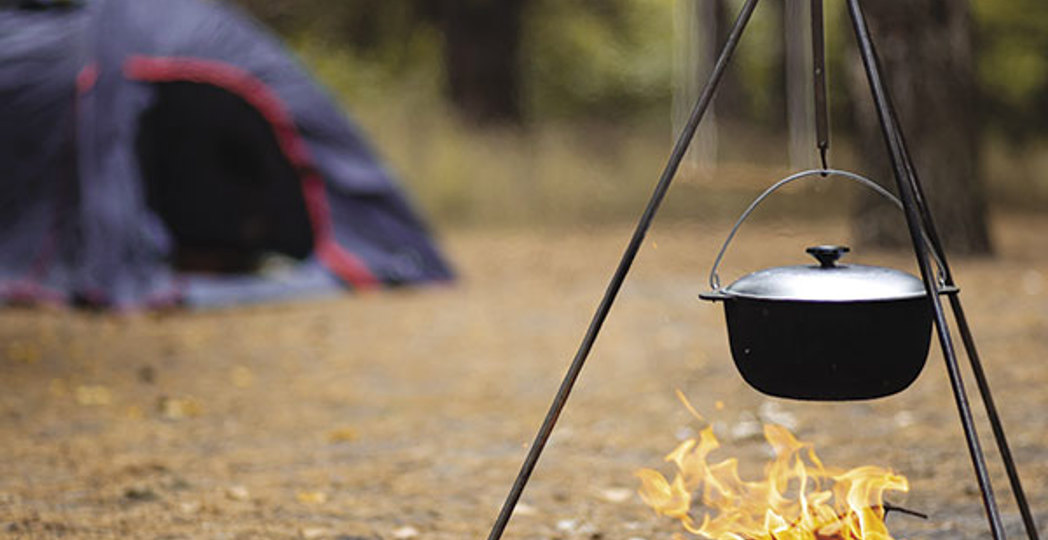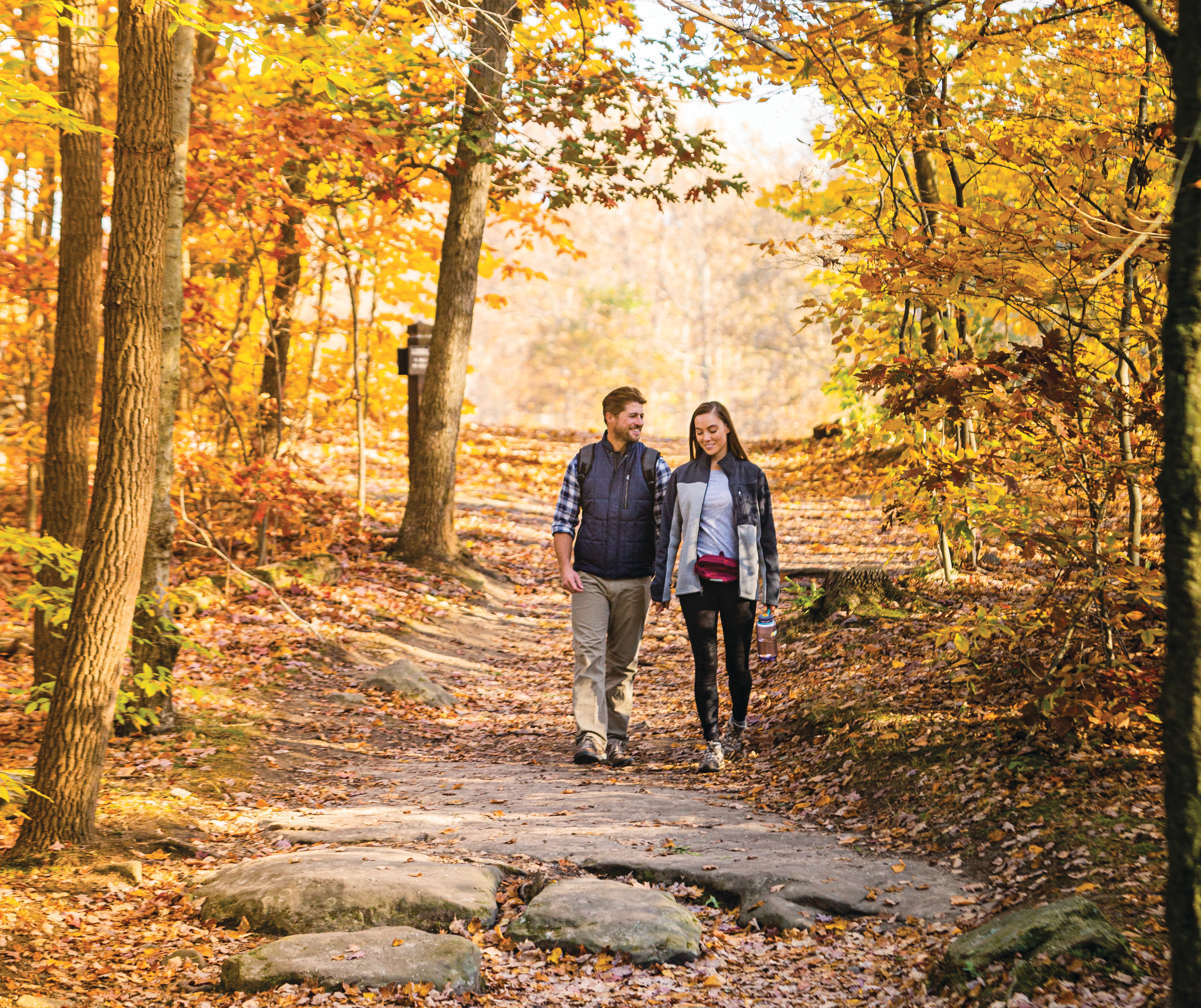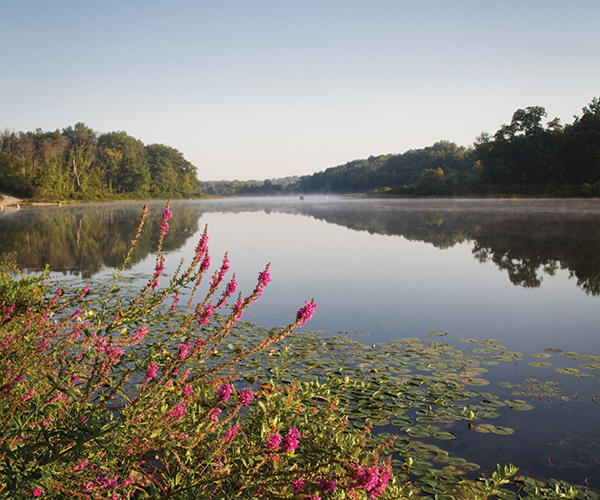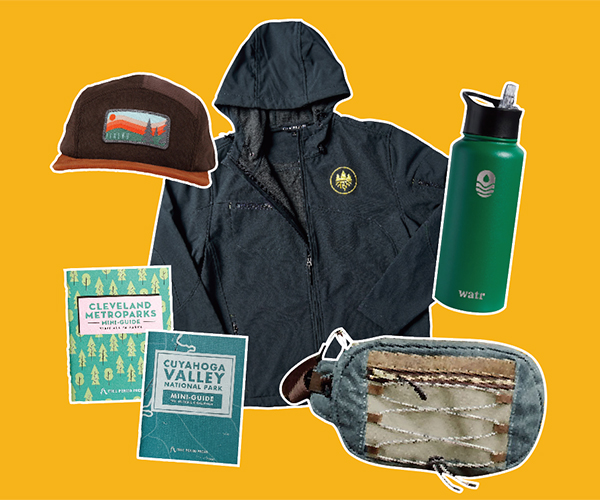Camping Cleveland: A Clevelander's Guide To Camping Like A Pro
by Sara Crawford | Jun. 29, 2020 | 12:00 PM

DO: Make sure you’re on flat ground and that your placement is safe, and not on a deer trail or in another hazardous location. “Make sure that you’re not pitching your tent under a branch that is broken off and ready to fall down on you at 3:00 in the morning,” Laskowski says.
DON’T: Put your ground cloth or tarp on the outside of the tent if it’s raining. Instead, use it as an extra layer of protection by putting it on the inside, folding it up and running it along the bottom edges of the tent to create a small barrier.
DO: Hang your sleeping bag on a clothing line in your attic or a spare bedroom when storing it. Compressing the sleeping bag for months at a time will wear down its durability. “When you take that bag out, it will fluff up again, but never 100% to what it used to be,” says Laskowski.
DON’T: Sleep on the ground when you’re roughing it — it’s a quick way to lose your body heat. “Your body’s going to be working all night to heat up the earth,” he says. Instead, bring a mat or a small air mattress.
Fire Brand
Starting a fire to cook food to keep warm doesn’t have to be an ambitious undertaking, but there is a science to crafting the perfect flame. Laskowski gives us three things to know before igniting the light on your campfire. “Wood has to get to 780 degrees before it ignites, so the closer and faster we get to 780 degrees, the easier it’s going to ignite,” he says.
Forage dry wood
Laskowski suggests two tests to tell if wood is dry enough to catch flame: If you hold a piece of wood to your face and it’s warm, or if a stick cracks without bending, it’s good to use. “If it’s been raining for a while, take a knife or rock and scrape the bark off a piece of wood to get to the dry center,” says Laskowski.
Construct a teepee with twigs of varying size
Start by placing three sticks on the ground to create a small teepee. Then, leaving a small gap big enough for your hand to fit inside, line the outside of the teepee with progressively larger layers of sticks. “The mistake people make is making too big of size-jumps between layers,” says Laskowski. “It has to be kind of like dominoes, where one stick burns to ignite the next.”
Use 100% cotton lint or other natural items as tinder
“Polyester is plastic, so the lint from polyesters is just going to smolder,” says Laskowski. He suggests collecting lint from a freshly dried set of towels or going on the hunt for pine needles, cattail heads and dry grass. “You need to get a combination of at least three to make a good natural tinder because they all burn at different rates,” says Laskowski.
Ivy League
Poison Ivy may be at the center of most campfire horror stories, but the creeping vine is easily identifiable. You’ll find it growing along the bark of trees or on the ground. It has a shiny reddish tinge and each offshoot has three leaves. “The center of the leaf is a mirror image of both sides,” says Laskowski.
To avoid getting a rash from the urushiol oil in its leaves, he suggests wearing long socks or jeans. If you somehow come into contact, look for jewelweed, also known as touch-me-nots. The orange-flowered plant typically grows within 50 feet of poison ivy and acts as a natural cure for the rash. “You simply take the stalk of the plant, rub it between your hands and rub it wherever you touched poison ivy,” he says.
Gimme S’more: Nothing says summer like roasting marshmallows over a campfire in preparation for an ooey gooey s’more. Luna Bakery & Cafe owner Bridget Thibeault helps us level up this sweet summer treat.
Step 1: Get materials
You’ll need 8 ounces of dark Ghirardelli chocolate, 1 cup heavy cream, a loaf of brioche or challah bread, a pack of marshmallows and salt.
Step 2: Make a chocolate ganache
At home, roughly chop dark chocolate and combine with a pinch of salt in a stainless steel or heat-proof bowl and set aside. Place heavy cream in a small saucepan and heat on the stove until simmering. Pour the heavy cream over the chocolate. Cover the bowl with saran wrap and let sit for five minutes. Then whisk to ensure all chunks have been melted. Refrigerate.
Step 3: Toast bread and roast marshmallow
At your campsite, place a wire rack over the fire, position two pieces of bread on the rack to toast, and roast one marshmallow.
Step 4: Build your s’more
Spread the chocolate ganache onto the bread. Then, place the toasted marshmallow on top. Finish off the s’more by placing the final piece of toast on top.
Trending
-
1
-
2
-
3
-
4
-
5










